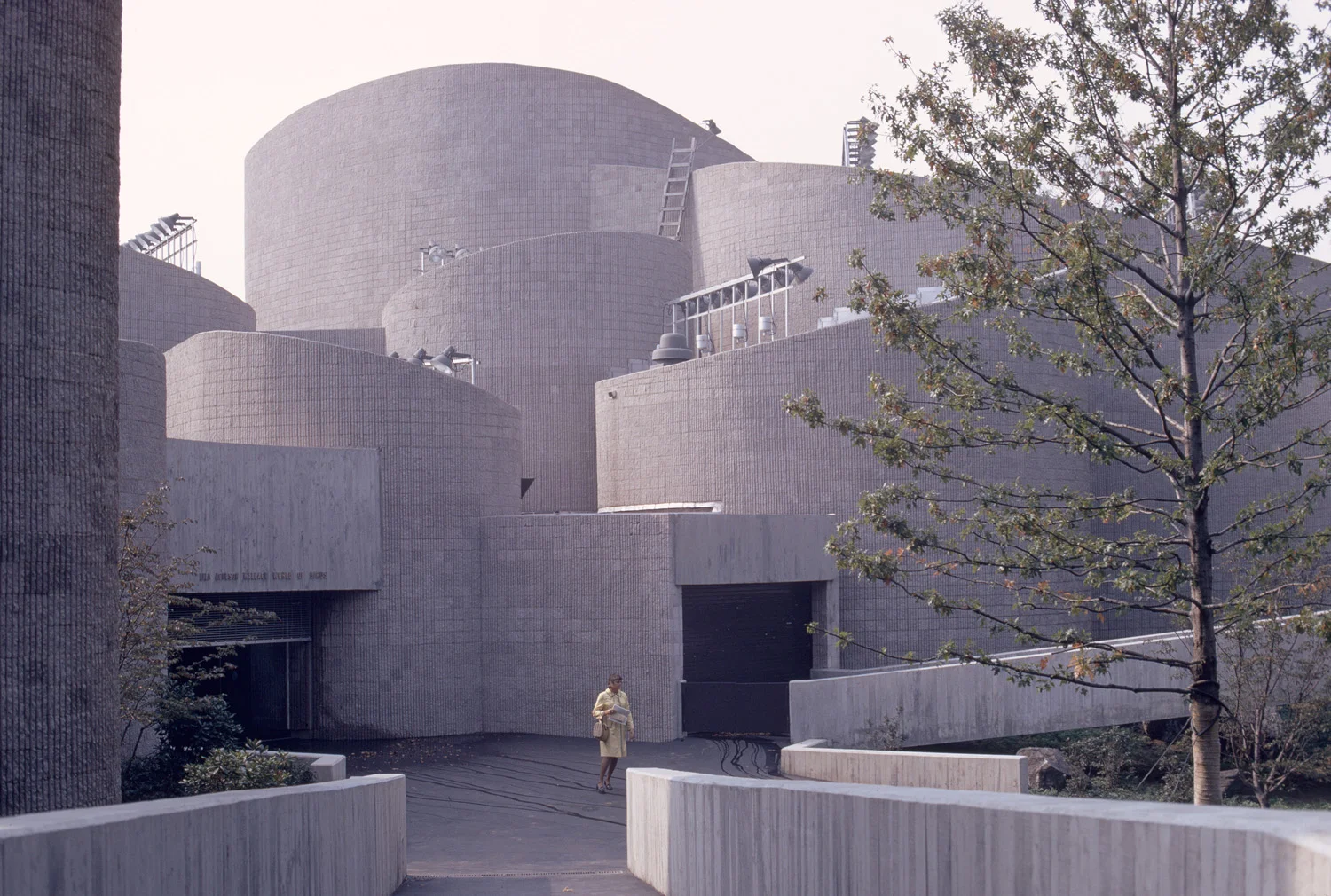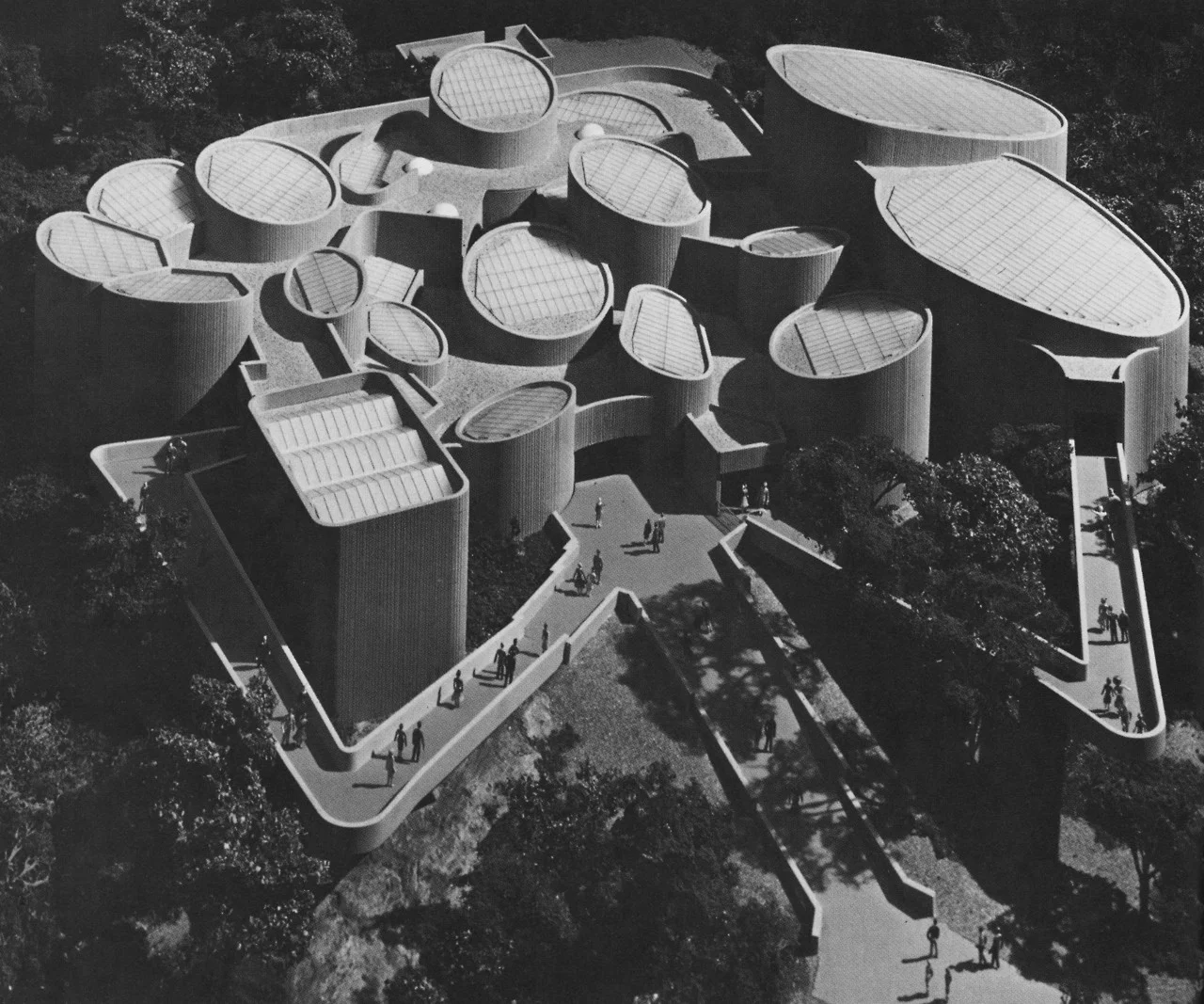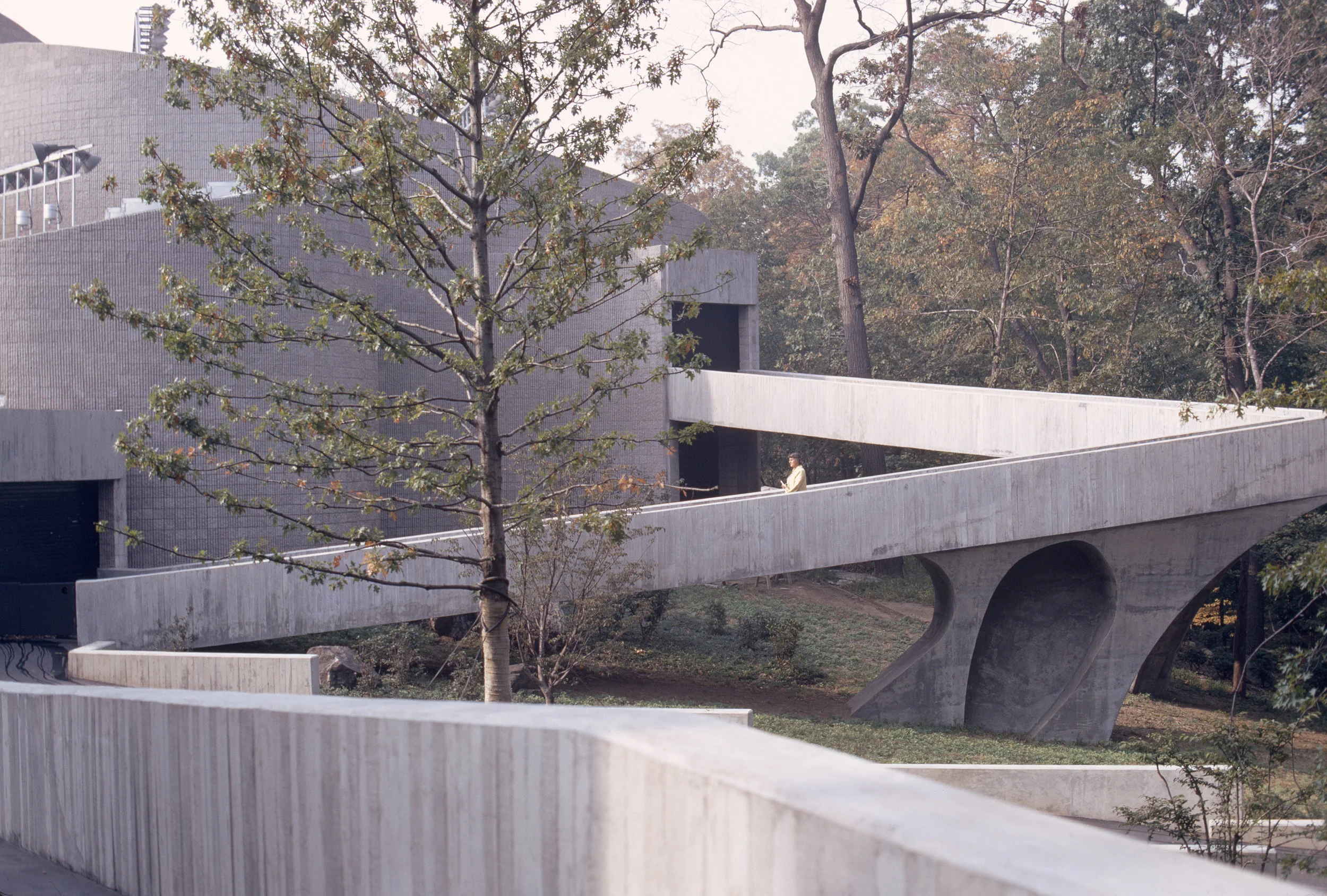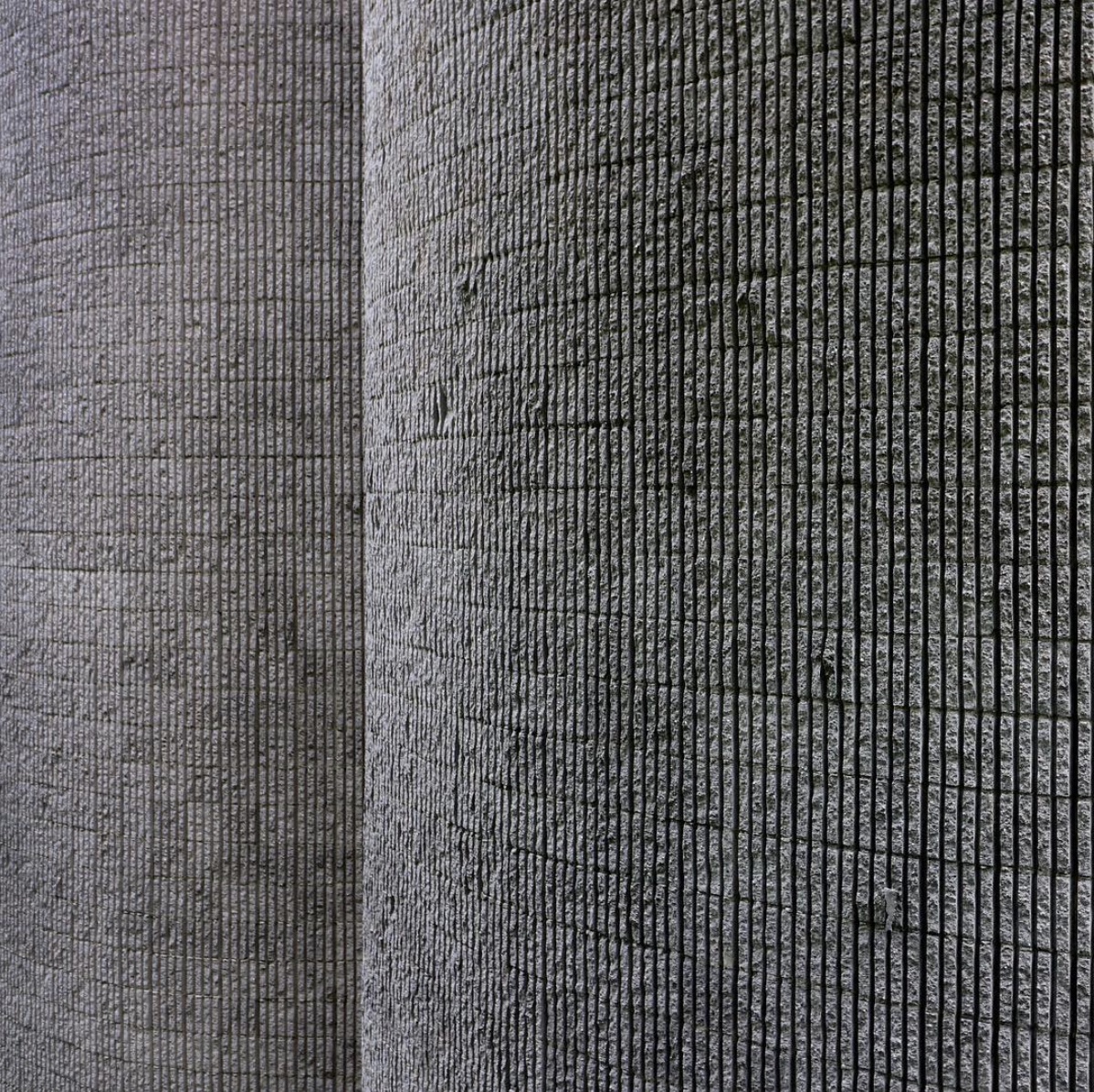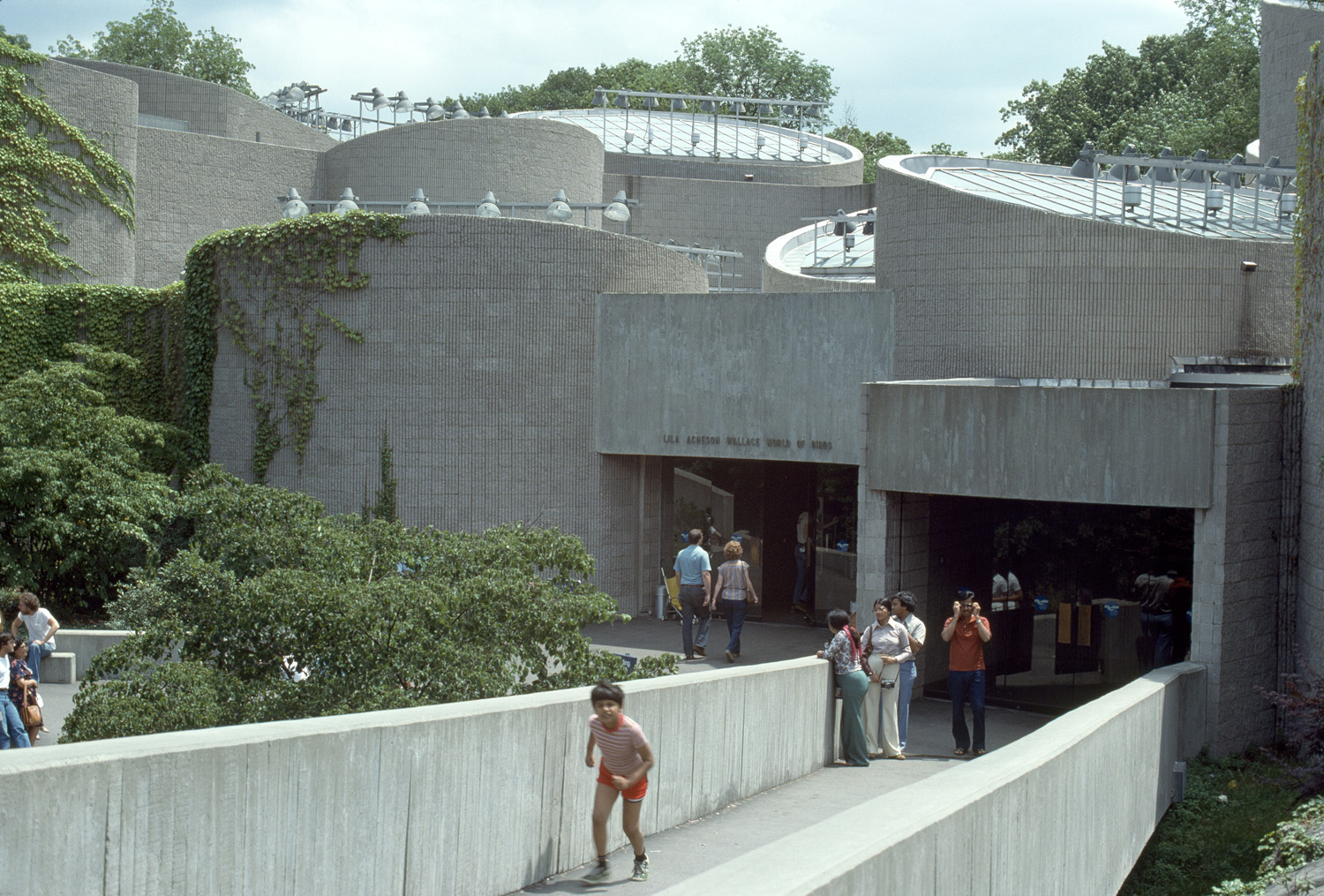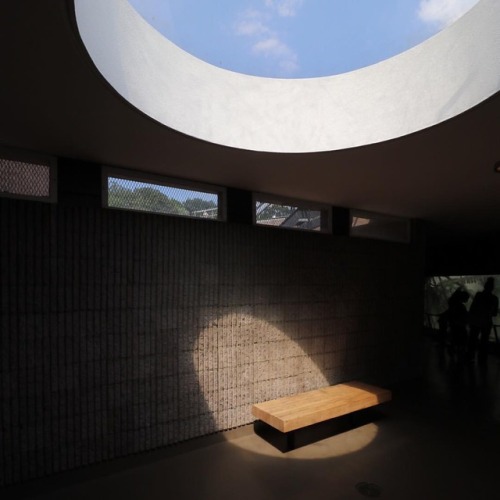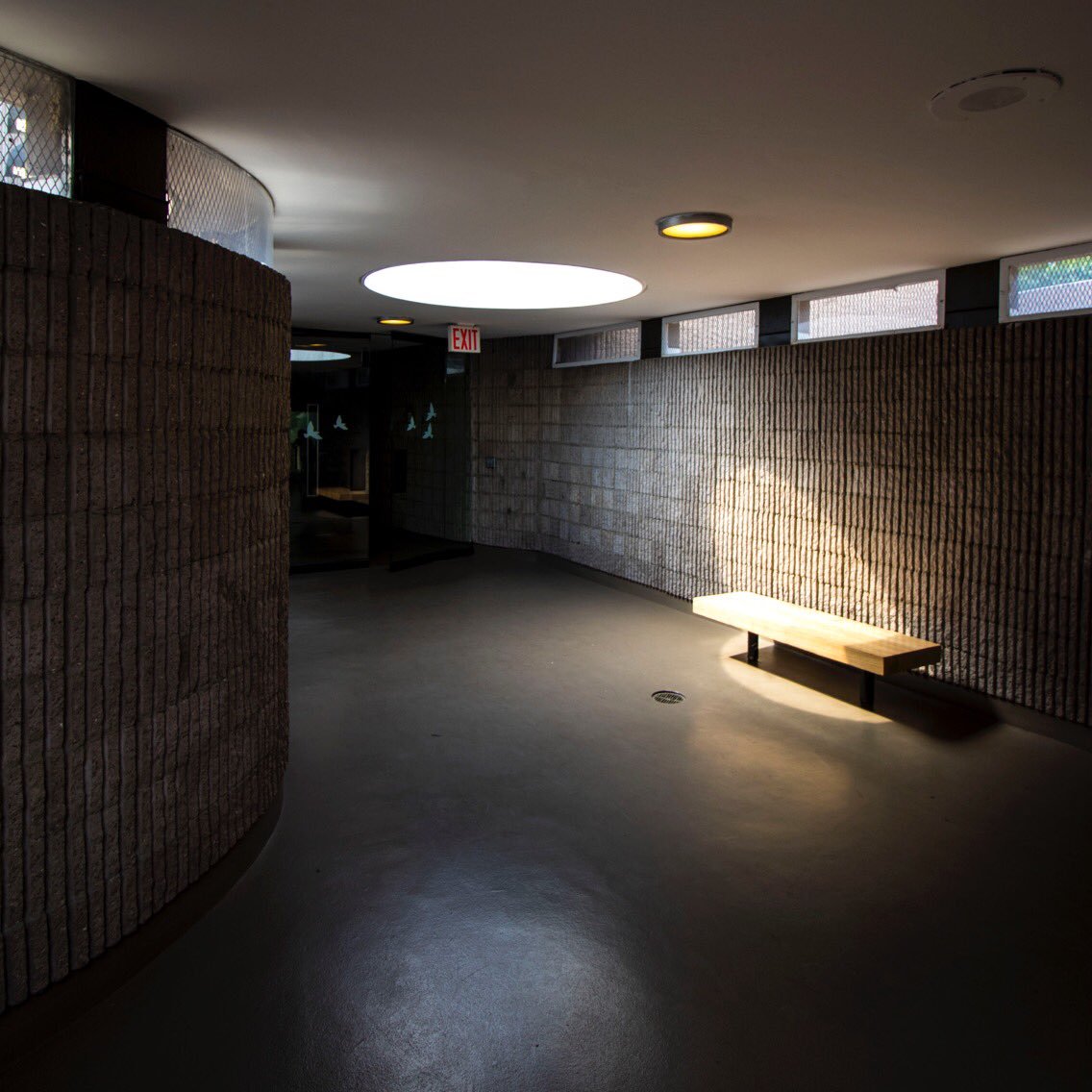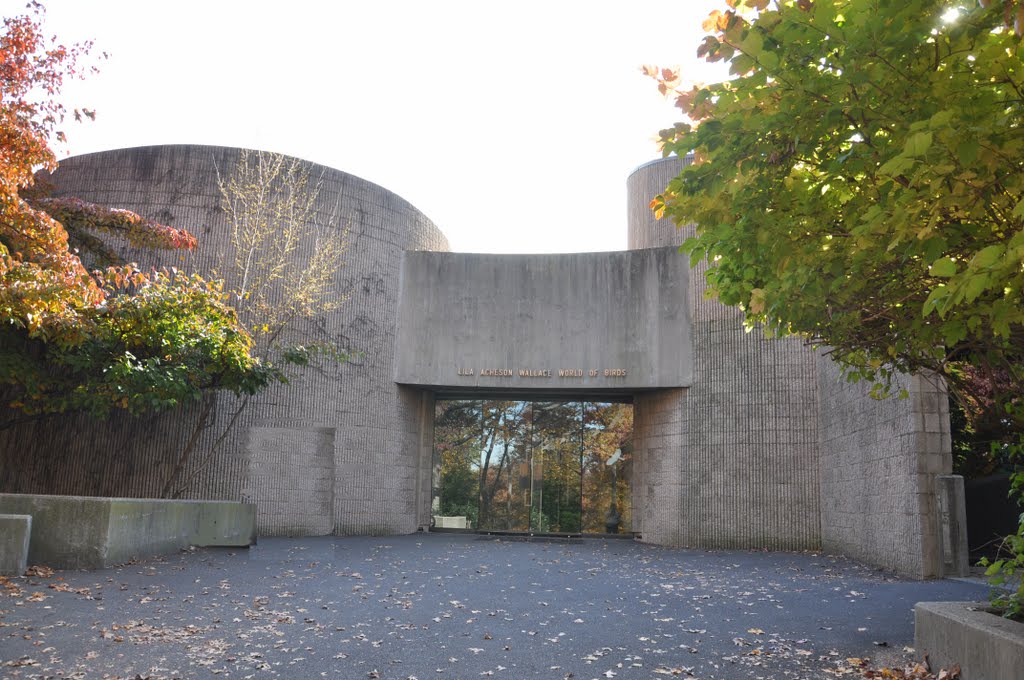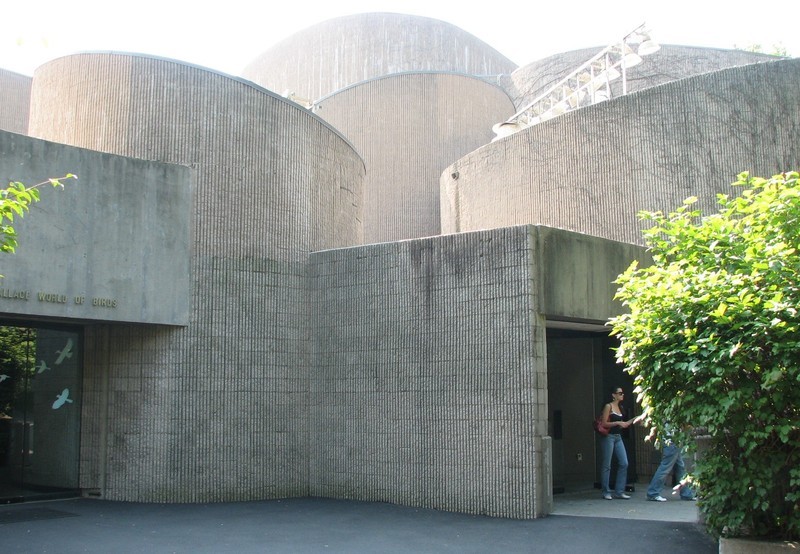LILA ACHESON WALLACE WORLD OF BIRDS AT THE BRONX ZOO
G. E. Kidder Smith, Massachusetts Institute of Technology
LILA ACHESON WALLACE WORLD OF BIRDS AT THE BRONX ZOO
Date: 1972
Architect: Morris Ketchum, Jr. & Associates
Address: Boston Road, Bronx Zoo
Use: Zoo
When it opened in 1972 after twelve years of planning at double the original budget, the World of Birds was heralded for its unconventional but monumental design. Spanning two floors with meandering ramps through multiple aviaries, the World was designed to adhere to its exhibition programming, not to be an attraction on its own like the earlier Beaux-Arts structures. The result was a grouping of cylindrical forms of varying heights and widths jutting out from a central mass that Ada Louise Huxtable described as “an asparaguslike bunch of cut‐off cylinders, ellipses and free forms joined by ramps.” Emily Hahn for the New York Times saw a resemblance with “a number of off‐white gas tanks or silos, not uniform but of differing girths and heights."
The curvaceous structure, along with its corridors and ramps are constructed from reinforced concrete poured in place and rough-hammered. Despite noting the striking nature of the concrete, the architect Morris Ketchum recalled he wasn’t concerned about the external appearance, but wanted to make a habitat hospitable for the animals, using concrete as a “protective skin."
In total World of Birds covers 30,000 square feet with 24 separate areas. Inside, ramps lead visitors through habitats from all over the world–deserts, rainforests with waterfalls and simulated storms, forests–with each cylindrical tower having a skylight angled specifically for the individual habitat, catching the sunlight for as long as needed, as not only were the birds foreign, but the plantings were procured from all over the country, mimicking the natural environments of the chosen species.
Aerial view showing the angled skylights
“ Each tower had to be just the height that would not cast a shadow on any skylight, hence the varied circles, ellipses and other shapes topping short and tall towers in what appears to be —but is not—a careless jumble. It is obvious that the whole arrangement works well. Some birds started nesting as soon as they took up residence”
World of Birds exit ramp. (photograph by G. E. Kidder Smith, Collection of Architectural Firm: Jr. And Associates Morris Ketchum, MIT Libraries, 1972)
The curves also add to the exhibition space, limiting the visitors' visibility, as Ketchum explained, "we wanted all the exhibits designed so that visitors wouldn't see the skylights unless they craned their necks. Also, you'll see no corners. There are corners, not one in sight, because they limit the eye. The background is always curved, and the door—you've got to have a service door, of course — is curved with it, so it's almost invisible..." To further enhance the flowing character of the space, World of Birds contains no stairs, utilizing ramps flowing in and out of the exhibitions. A sweeping entrance ramp and an elbowed exit ramp help to anchor the concrete cylinders.
Ada Louise Huxtable commended Ketchum's design, calling it "impressive as art, science and theater."
“Together they add immeasurably to the unquenchable wonder and delight of this paradoxical city—so consistently capable of delivering the best that it bothers to do so only occasionally, and so rich in resources that it throws them away... The World of Birds, deceptively monumental in photographs, fits the landscape with felicity — as it is meant to do. Form follows function in a meticulous packaging of the exhibition program... The point, however, is not to create a far‐out monument, but an interior of simulated natural environments.”
Sources:
George Everard Kidder Smith. Source Book of American Architecture: 500 Notable Buildings from the 10th Century to the Present. Princeton Architectural Press, 1996. p, 576.
Hahn, Emily. Worlds and worlds of birds in the Bronx. The New York Times, April 22, 1973.
Huxtable, Ada Louise. New Bronx Zoo Building a Rara Avis. New York Times, June 14, 1972.
Livingston, Bernard. Zoo: Animals, People, Places. iUniverse, 2000. p. 272.

